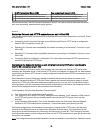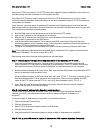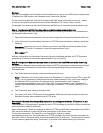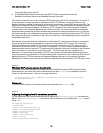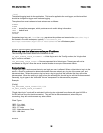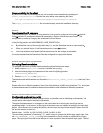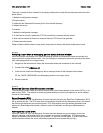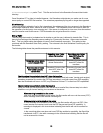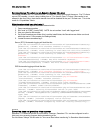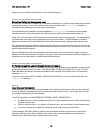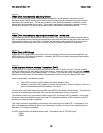IBM Lotus Sametime 7.5.1 Release Notes
Sametime, Sametime Gateway, Sametime Mobile
Force users to connect through home cluster
Sometimes, it is essential that users connect to their home server, for example, when using Facetime. In
this case, to prevent the ability to connect to remote servers, forwarded log-ins should be rejected during
the log-in process. This means that users should connect only to their home server.
This release note relates to both servers and clusters. Every user will be available to connect directly only
to their home server/cluster. The log-in requests, which are forwarded from distributed (remote)
servers/clusters will be rejected.
In order to force users to connect to a given server/cluster through a proxy or a list, this feature,
configurable through sametime.ini, is available.
How to configure :
In the sametime.ini file, in the [Connectivity] section, the VPMX_TRUSTED_CLIENT_IPS setting
should be set to a comma-separated list of trusted IP addresses. These addresses should be the proxy
addresses.
An empty list (default) means the feature is turned off, and clients from all IP addresses can connect.
Note that users should not be allowed to work directly on the proxy machine, or the limit is bypassed.
Sametime
Multiple Community considerations
The Sametime 7.5.x Connect client supports the ability to define multiple Sametime communities in an
interface, and be logged into one or more of those communities at the same time. There are some
important points to consider if you need to define more than one community or switch from one
community to another:
z
If you have multiple communities in which some are 7.5.x communities and some are pre-7.5
communities, you should define your primary community (the main community defined first when
the client is first run) as your most used 7.5.x community.
z
Some features in 7.5.x work only with your primary community and require policies to be enabled
for them, for example telephony. You will not be able to participate in telephony calls with users
of a community that is not defined as your primary community.
z
Selective 'Do Not Disturb' requires a 7.5.x server, and will only work with users from your primary
community.
Sametime
New UNIX config values not always propagated by single restart
At a high level, configuration values on a Sametime server are provided to system components by a
configuration servlet. The values provided by this servlet are stored in a cache to improve performance.
When system components retrieve values, these values come from the cache.
If configuration changes are made directly to a data source, such as STConfig.nsf or sametime.ini, the
server must be restarted. On Windows, as the server comes up, the config cache is refreshed from the
config servlet before system components can retrieve values from the cache.
On UNIX, however, the order of component startup is more random than on Windows. As a result, it's
possible that system components will retrieve configuration values from the cache before it gets
refreshed. As a result, the refresh of the cache occurs after values have already been retrieved. If this
happens, a second restart of the server will guarantee that system components retrieve the freshest
configuration values.
48



